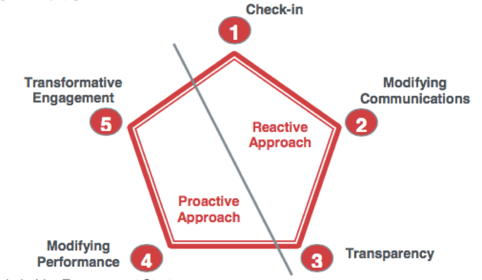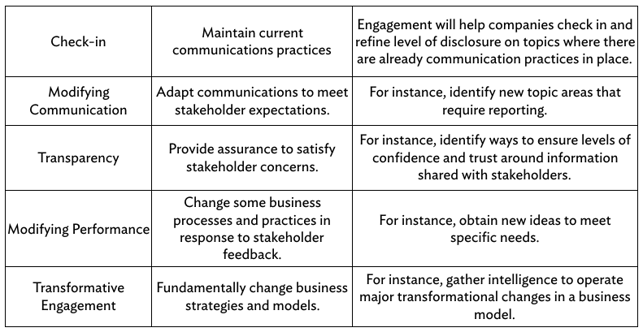The concepts of stakeholder management and stakeholder engagement are fundamentally different. The former aims to minimise conflicts while attempting to maximise outcomes, independent of the party’s needs. However, the latter focuses on yielding win/win success for all parties concerned.
Just a quick recap from the previous article, the diagram below shows four categories of stakeholders in terms of Power and Interest.
It’s important to note that Power and Interest are perceived from your perspective in your engagement with the stakeholders. Your interest in a stakeholder is determined by the desired resources the stakeholder is able to provide you. The more a stakeholder is able to help you with the resources, the higher would be your interest. Power determines your influence over the stakeholder. The more power you have, the greater would be your influence over a stakeholder.
To maximise your effectiveness, here are the 5 golden rules of stakeholder engagement you don't want to miss!

Golden Rule 1 - Identify Your Category A Stakeholders
Category A stakeholders will provide you and your organisation with the critically needed resources. Therefore, you wouldn’t want to lose them for clear reasons. You can influence them either from your position power, personal power or even both. Position power stems from the authority that’s accorded to you based on the job title you hold. Personal power offshoots from your expertise, connection with networks and opinion leaders, and information that you possess.
When engaging external stakeholders, it’s likely that you would leverage your personal power though at times, position power does come in handy.
Golden Rule 2 - Different Strokes for Different Folks
On the diagonal extreme, category D stakeholders are of little importance to you and your organisation and hence the treatment meted to engage them will be different.
Similarly, imagine spending much time and resources on category B stakeholders. Despite your high power over them, the yield from such stakeholders are almost negligible.
Category C stakeholders are the next in line, deserving your attention to maximise the effectiveness of your engagement. The key focal point is to find ways to increase your power bases to influence them appropriately, depending on whether they are external or internal stakeholders.
Golden Rule 3 - Map Out Clear Indicators Of Successful Engagement
Every success has an indication of explicit outcomes. Consider what would success look like when category A stakeholders are fully engaged with your organisation. Would it be in the form of increased business transactions? Increased responsiveness from vendors? Getting lower prices from key vendors? Or perhaps getting better support from the government agencies?
Stakeholder engagement is fluid and requires your responsive adjustments along the way. What's important is spelling out “what would success look like?” so that you can make necessary adjustments towards getting the desired outcomes and resources.
Golden Rule 4 - Have A Clear And Differentiated Action Plan
Too often, ideas fail to materialise due to the lack of an action plan which includes the initiatives to be launched, deadlines, resources needed; and more importantly, the person in charge (driver of the initiative). A stakeholder engagement plan should also consider the different forms, from Check-in to Transformative Engagement. Furthering the culture of interdependence for collective success, it’s important to realise and apply the appropriate level of engagement for optimal outcomes.
Engaging category A stakeholders requires transparency, by providing assurance to satisfy the stakeholders concerned. However, in some cases, you might want to modify the performance by changing some business processes or practices to suit the stakeholders, as the stakes involved are highly required by your organisation. Ultimately, you have more options with which to engage these stakeholders and maintain your high level of power over them.
For category C stakeholders whom you have high interest in but low power or influence over, engaging them may require adopting transformative engagement; changing your organisation's business strategies or business model to meet the needs of these stakeholders. In turn, they'll be poised to provide your organisation with the much needed resources.
As category B and D stakeholders are of low interest to you and your organisation at this point, check-in and modifying communication approaches would suffice. This could mean maintaining current communications and adapting communications to suit the stakeholders' needs respectively.


Golden Rule 5 - Make Stakeholder Engagement A Culture
Most initiatives fizzle out over time and present themselves as a one-off event. As in all activities, there’s often a resisting force that prevents you from driving towards the desired state; in this case, stakeholder engagement. Ensure that members of the organisation are on board to engage stakeholders and that this soon becomes a way of life in their daily activities. Among many ideas you may have, leaders could recognise the efforts of teams that are involved in stakeholder engagement by affirming, rewarding, giving credit to others, or perhaps including it in the staff's performance appraisal.
Conclusion
Organisations that continually engage their stakeholders in the spirit of cultivating collective success will find themselves in the "good books” of their stakeholders. I hope you’ve found this "Different Strokes, Different Folks” strategy useful! In my next writing, I’ll be providing strategies to leverage on the personal and position power bases mentioned here.
Interested to read more articles like this? Subscribe our weekly blog now!

